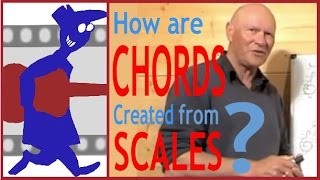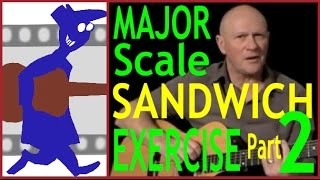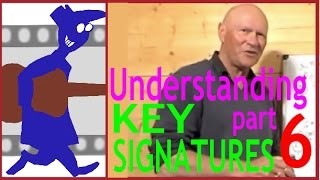Diminished Chords - How to Play them on the Guitar
Published on 26 January 2016
If you would like to gain full access to all our Guitar Teaching Materials please visit the Secret Guitar Teacher Site and take a free tour: http://secretguitarteacher.com/youtube/ssb/Advanced/b-rg_cW8AzA/112932812-how-do-i-make-diminished-chords-1.php
SECRET SOUND BITE A1
How do I make diminished chords?
Diminished chords, or to give them their proper name - diminished seventh chords come in useful in several different ways.
But unless you are an old hand, you may feel that they are rather complicated to understand, and therefore difficult to learn to use.
Well luckily, nothing could be further from the truth! Because, although it is fair to say that the theoretical aspects of diminished chords sound complicated when we guitar teachers try to explain them, in practical terms they are actually nice and easy to work with.
Making them, finding them, and using them to spice up your chord sequences,
as well as improvising over them, are all easy, if you know a few simple tricks.
In this, the first in a series of short lessons on diminished and half-diminished chords, I want to show you the relationship between the dominant seventh chord and the diminished seventh chord. Because I think understanding this alone, is half the battle won.
Let me show you a neat trick. There are just three steps to this. First, take a look at these familiar beginner’s chords: A7...
D7th … and E7th…
Now to keep this simple, make sure you are playing them as four-note chords like this…
Notice that in this configuration there is just one of each of the chord tones - root 3rd, 5th and flatted 7th - and if you have studied our lessons on the CAGED system, you won’t be surprised that the root note for this A shaped chord is found on the A string.
Likewise, for this D7 shape the root note is on the D string.
And for the E shape the root note is on the E string.
So step 1 is to play one of these dominant seventh chord shapes. And step 2 is: locate the root note.
Step 3 is simply to sharpen the root note
By doing this we turn A7 into A#dim7th
Or D7th into D#dim7th
Or E7th into Fdim7th
And as these are all movable chord shapes, this means we suddenly have the means of playing dim7th chords rooted off any of the bottom three strings.
We just have to get into the habit of thinking of the dominant 7th chord rooted one semitone or half step below the chord we are looking for. Then sharpening the root note.
So here are three possible ways of playing C# dim 7 for example.
In the next Secret Soundbite in this series, we’ll take a quick look at the theory behind this relationship.
But I have to warn you that, as mentioned in the introduction to this lesson, the theory is not as straightforward as the practice!
So I recommend spending a bit of time just working with this trick and making yourself familiar with these three movable diminished shapes and learning to use that connection between the dominant 7th shape one fret lower.
If you found this little video useful, please click on the ‘Like’ button and do feel free to share the video with your friends.
And if you’d like to gain full access to all our guitar teaching materials please visit the Secret Guitar Teacher website and
take a free look round at what’s available there.
See you again soon!
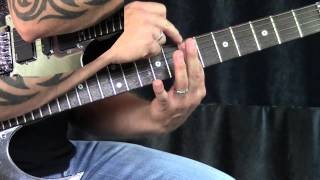 How To Harmonize A Lead Guitar Line
How To Harmonize A Lead Guitar Line
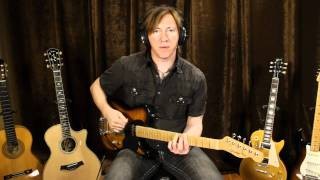 RobbieCalvoGuitar.com - Pentatonics For Modal Prog...
RobbieCalvoGuitar.com - Pentatonics For Modal Prog...
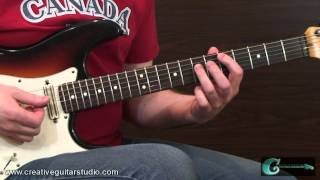 GUITAR THEORY - Unlocking the Guitar Neck Position...
GUITAR THEORY - Unlocking the Guitar Neck Position...
 Guitar Lesson - Clearing | Steve Stine | Guitar Zo...
Guitar Lesson - Clearing | Steve Stine | Guitar Zo...
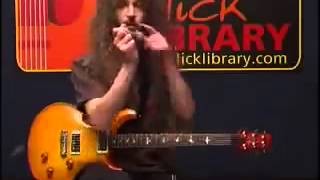 Techniques Module Alternate Picking Guitar Lesson
Techniques Module Alternate Picking Guitar Lesson
 How to Embellish a C Chord
How to Embellish a C Chord
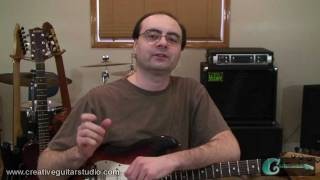 GUITAR THEORY: Voicing 7th Chords and Beyond
GUITAR THEORY: Voicing 7th Chords and Beyond
 How to Improvise with the Diminished Scale
How to Improvise with the Diminished Scale
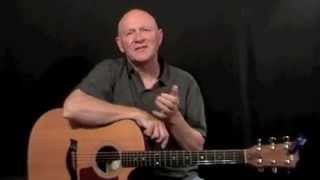 F Chord Cheats for Guitar Players
F Chord Cheats for Guitar Players
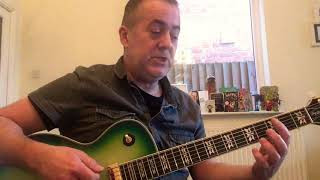 Outline the chords of the G Major scale in triads.
Outline the chords of the G Major scale in triads.

